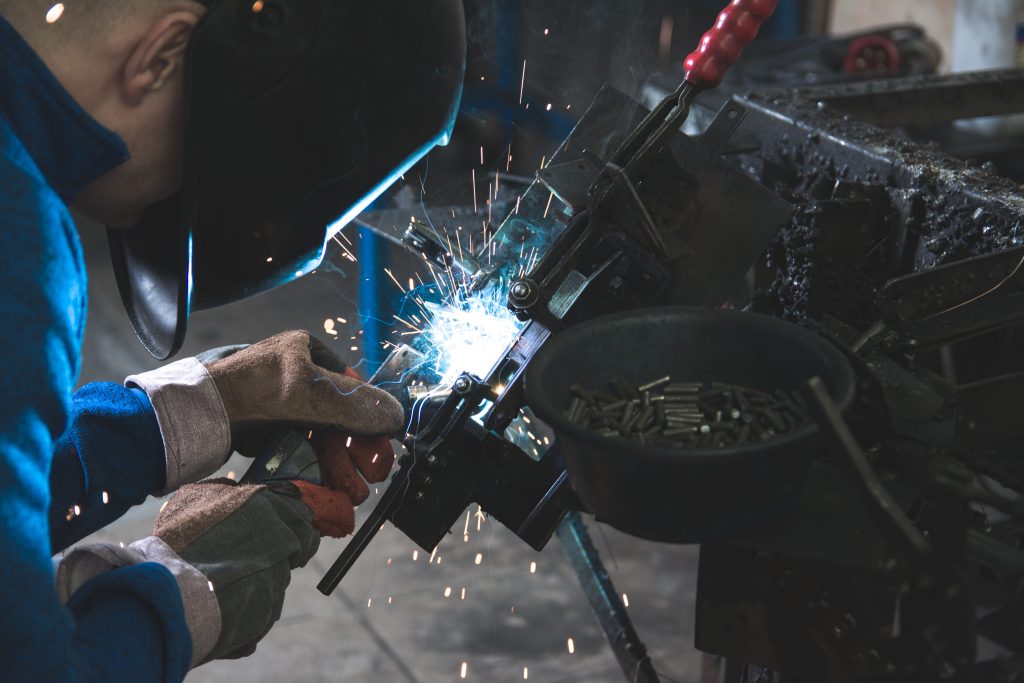
Welding is an essential process in various industries, including construction, automotive, manufacturing, and art. The choice of metal plays a crucial role in determining the strength, durability, and appearance of the final product. This article will explore the different types of metals used in welding, along with their properties, applications, and welding techniques.
Common Metals in Welding
Steel and its alloys – Steel is the most commonly used metal in welding, thanks to its strength, versatility, and affordability. It can be found in various forms, such as carbon steel, stainless steel, and high-strength low-alloy (HSLA) steel. Each type has unique properties and applications, as explained in the different types of metals used in welding article.
Aluminum – Lightweight and corrosion-resistant, aluminum is a popular choice for welding projects requiring lightweight structures, such as aircraft components and automotive parts. It is crucial to use the appropriate welding techniques and filler materials, like aluminum alloys, to achieve strong, durable welds.
Copper – Copper and its alloys (such as brass and bronze) are known for their excellent electrical and thermal conductivity. They are often used in electrical components and heat exchangers. However, welding copper requires careful preparation and skill, as it has a high thermal conductivity and a relatively low melting point.
Nickel – Nickel and its alloys are used in applications requiring high strength, corrosion resistance, and heat resistance. They can be found in chemical processing, aerospace, and nuclear industries. Nickel alloys can be welded using various welding processes, including TIG, MIG, and stick welding.
Less Common Metals in Welding
Titanium – Titanium is known for its excellent strength-to-weight ratio, corrosion resistance, and biocompatibility. It is used in aerospace, automotive, medical implants, and even art and sculpture. Welding titanium requires strict control of the welding environment and specialized techniques, such as TIG welding.
Magnesium – Magnesium is lightweight and has good strength-to-weight ratio, making it suitable for applications where weight reduction is crucial. Magnesium alloys are primarily used in automotive and aerospace industries. Welding magnesium requires specialized techniques and careful consideration of filler materials.
Zinc – Zinc is not typically welded, as it has a low melting point and can produce toxic fumes when heated. However, it is often used as a coating for steel to provide corrosion protection. The importance of safety in welding cannot be overstated when working with materials like zinc.
Selecting the Right Metal for Your Project
Choosing the appropriate metal for your welding project depends on several factors, including the required strength, corrosion resistance, weight, and cost. The welding process, technique, and types of welding rods and wires also play a crucial role in ensuring a successful outcome.
Understanding the specific properties and applications of various metals, as well as their compatibility with different welding processes, is essential for any welder. By doing so, you can ensure the longevity, performance, and aesthetic appeal of your welded products.
FAQs
- What is the most commonly used metal in welding?
Steel is the most commonly used metal in welding due to its strength, versatility, and affordability. It comes in various forms, such as carbon steel, stainless steel, and high-strength low-alloy (HSLA) steel. - What are the challenges when welding aluminum?
Welding aluminum requires using the appropriate welding techniques and filler materials to achieve strong, durable welds. Aluminum has a higher thermal conductivity and a lower melting point than steel, making it more challenging to weld. - Which metal is suitable for weight-sensitive applications?
Both aluminum and magnesium are lightweight metals with good strength-to-weight ratios, making them suitable for applications where weight reduction is crucial, such as aerospace and automotive industries. - Why is safety important when working with zinc?
Zinc can produce toxic fumes when heated, so the importance of safety in welding is crucial when working with materials like zinc. Proper ventilation and personal protective equipment should be used to ensure a safe working environment. - How can I select the right metal for my welding project?
Consider factors such as the required strength, corrosion resistance, weight, and cost, along with the welding process, technique, and types of welding rods and wires. Understanding the specific properties and applications of various metals will help you make the right choice for your project.
